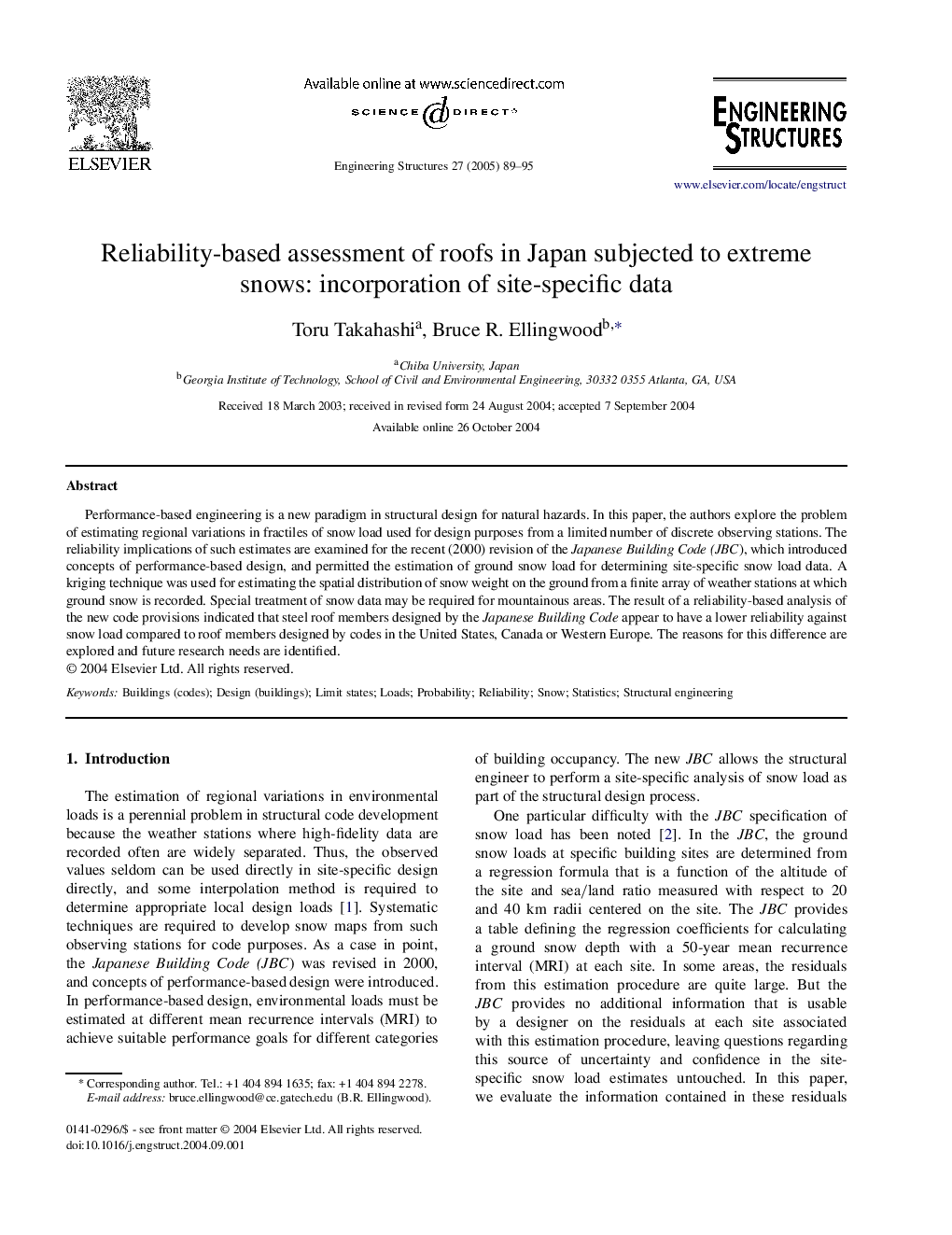| Article ID | Journal | Published Year | Pages | File Type |
|---|---|---|---|---|
| 10287188 | Engineering Structures | 2005 | 7 Pages |
Abstract
Performance-based engineering is a new paradigm in structural design for natural hazards. In this paper, the authors explore the problem of estimating regional variations in fractiles of snow load used for design purposes from a limited number of discrete observing stations. The reliability implications of such estimates are examined for the recent (2000) revision of the Japanese Building Code (JBC), which introduced concepts of performance-based design, and permitted the estimation of ground snow load for determining site-specific snow load data. A kriging technique was used for estimating the spatial distribution of snow weight on the ground from a finite array of weather stations at which ground snow is recorded. Special treatment of snow data may be required for mountainous areas. The result of a reliability-based analysis of the new code provisions indicated that steel roof members designed by the Japanese Building Code appear to have a lower reliability against snow load compared to roof members designed by codes in the United States, Canada or Western Europe. The reasons for this difference are explored and future research needs are identified.
Keywords
Related Topics
Physical Sciences and Engineering
Earth and Planetary Sciences
Geotechnical Engineering and Engineering Geology
Authors
Toru Takahashi, Bruce R. Ellingwood,
